Nowadays, people expect multiple types of content to suit their needs. Not everyone has time to read a 6,000-word blog post. Others want a quick video and then there’s podcasting - a great way to reach people outside of when they’re sitting in front of a computer. The best part? You don’t need to be an established content creator to learn how to start a podcast for your business.
Unlike written or visual content, podcasts are great to listen to when you’re on the treadmill at the gym, on your morning commute to work, sticking your headphones in while doing the hoover and pretty much any time a listener chooses.
Why?
It’s now easier than ever to listen to podcasts. Bluetooth technology lets people listen in their cars. Apple’s Podcast app is pre-installed on every device and it only takes a few clicks to subscribe to a podcast. It’ll also notify them each time a new episode is available to listen and download.
It’s on-demand. Just like Netflix disrupted the streaming industry, podcasting is making its own big moves.
Nothing can stop the rise of podcasts as on-demand listening has become the go-to choice for people all over the globe. With over 800,000 active podcasts and over 54 million episodes currently available worldwide, it’s clear the demand is there.
As a business, it’s time to leverage that and cater to your audience by starting a podcast. Whether you’re completely new to it or you’ve had the itch to dive in but have never really hit the green light, this guide will cover what you need to know about starting a podcast for your business.
From the software and equipment you’ll need to the long-term benefits of podcasting, continue reading to find out more. Just a heads-up - this is a pretty long blog post so I’d recommend bookmarking it so you can jump back in whenever you want.
- The benefits of podcasting
- Why podcasting works as a content platform
- The podcasting stats you need to know
- How to start your podcast
The benefits of podcasting
The podcasting world has given you a new way to reach your audience. People are hooked on listening to podcasts as it’s an easy way to absorb information with little effort.
Still debating on whether or not you should start a podcast? Have a quick read through these benefits and we’ll see if you’ve changed your mind.
Build a personal connection
It’s different building a connection through written content than visual or audio. Sure, you could read all my blogs and comment on each one saying how useful they were but that ‘connection’ probably isn’t there. Mainly because all you’re doing is reading.
If I was on a podcast, I’d be able to open up to you more. You’d hear my voice every week. There would be running jokes and themes and it all builds a more personal relationship.
Do the same for yours. Open up to your viewers and listeners so you can build a relationship with them and in the long run, you’d sell more products because of how loyal they are to you.
A voice can engage an audience much better than words on a page can. That voice builds trust and it’s trust that eventually sells a product or service.
It’s convenient
With podcasting, you don’t need to worry about your audience being so busy they can’t listen and provide value. The great thing about podcasting is listeners can download episodes and replay it whenever they choose. Jogging, driving, working, relaxing - whatever the situation, listeners can consume a podcast episode with no effort.
If listeners subscribe to your podcast feed, they can get episodes downloaded automatically on their devices whenever you release a new one. It’s much quicker than searching for a keyword online and stumbling across your blog post or finding a video they like.
It’s easy to get started
Obviously, the more successful your podcast becomes, the more you should look to invest so the quality gets better. Although if you’re starting on the journey now, it’s fairly simple to begin. All you’ll really need is a computer, laptop or smartphone, software and a decent connection to the internet.
I’ll get into the specifics of the equipment you’ll need a little later on but the above is a good start. Press record, talk, edit and publish it on a platform of your choosing. Easy.
It’s an alternative to video
It’s no secret that video marketing is where your focus should be in 2020. However, who’s to say everyone in your team will be comfortable to shoot videos? That can take time. The beauty of podcasting is you can create both audio and video podcasts which gives listeners an option to pick from.
If you offer an audio-only option as you see on SoundCloud, that’s fine. Some of your listeners might prefer that method. But combining both and offering your audience the option is a great way of having the best of both worlds.
Increase traffic generation
Like any form of content, podcasting can help you reach out to new audiences for your business as it builds familiarity. Listeners tend to subscribe to a podcast they like so they can regularly listen.
As long as you’re consistent, your audience is likely to continue listening.
The knock-on effect is your loyal audience might then recommend your podcast to others. As a result, it increases your reach and can also lead to improved traffic and lead generation pretty quickly.
Improve conversion
It might sound a little strange as a podcast is a one-sided medium, but it can help you improve conversion. Podcasting regularly helps you build effective relationships with listeners and to them, it gives the feeling they know the person on the podcast.
People tend to listen to podcasts because they have something in common with the speaker or the brand. When the relationship is great, it builds trust and listeners then want to be associated with you.
When listeners think of you as a friend rather than a stranger, they’re more likely to buy from you which improves conversion rates.
They’re highly engaging
With so much information online, it’s easy for your audience to feel overwhelmed. There’s plenty of written content on the web so audio information makes a nice little change. It also leaves enough room for you to convey your message in a highly interactive way which written content might not always provide.
A survey of 300,000 podcast listeners found that 63% of people had bought something a host promoted on their show. The same survey also revealed that 71% said they’d visit a sponsor’s website, while 63% admitted they’d consider a new product or service advertised on a podcast they’re listening to.
Build more brand authority
It doesn’t matter if you’re the first in your industry to create a podcast or you’re the latest in a long line of brands adopting the method. Podcasts can help you build up your authority. When you give people more ways to consume your content and hear from the experts in your team, you become the go-to people listeners want to hear from and talk to.
Combine your podcasting efforts with audio and video options as well as a dedicated blog post, then you’ve covered all the bases to establish yourself as the leader.
It can be an additional revenue stream
When you start podcasting, you’ll realise you love doing it and it’s a lot of fun. Although, it’s also a nice way to make some extra money for your business if you’re successful and publish engaging episodes regularly. The podcasting industry is so big that the Interactive Advertising Bureau predicts the industry’s revenue will reach over £500 million this year.
The more consistent you are, the more you’ll grow. The more well-known your podcast becomes, the more likely you are to receive opportunities to monetise your episodes through sponsored content, affiliate marketing and more.
Obviously, it’s not a guarantee right away but it’s definitely a possibility down the line.
It’s huge for brand awareness
Other than showing up on Google, there are loads of podcast directories where people search for subjects and industries that interest them. If you’re where people are searching, that’s a great start.
The great thing about podcasting is that the level of branding can be quite subtle. You’ll have your logo in the artwork or if you’re creating a video podcast, on the video itself. You’ll probably mention your company name in the intro and outro as well and as podcasting isn’t really a sales tool, listeners will remember you without feeling like they’re being sold to.
It’s more interactive than other types of content
There are many ways you can get listeners to feel involved in your podcast. Whether it’s competitions, asking for questions through social media or any other way you want to encourage even deeper engagement with your audience.
The more audiences feel involved and valued, the more loyal the fan base you could create over time.
A handy onboarding tool
In industries where lifetime customer value is high, the process of educating your prospects about your brand and your industry can be quite tricky, time-consuming and a bit expensive.
Your podcast can also be a brilliant education and onboarding platform. By the time you speak to a new client, there’s a chance they might already know about you which means you waste less time walking them through the entire process.
You can repurpose them
Every time you create a new episode for your podcast, that doesn’t have to be the end. All the effort you put in can be used in many different ways such as creating snippets for social media, sharing teasers in your Facebook Group or splitting the clips up by subject and publishing them on YouTube.
Whatever you decide to do, there are plenty of ways to repurpose them and reach wider audiences.
I don’t blame you for thinking podcasts are a nice-to-have and probably not a necessity in your content efforts. But like anything using inbound tactics, the customers are in control so as marketers, we have to cater to their needs.
Why podcasting works as a content platform
From a creative standpoint, podcasts can work for almost every subject and industry. You could be an expert in sales and want to share tips and strategies. Maybe a marketer who wants to discuss the latest trends or even a passionate sports fan that has a dream of hosting a weekly show. In reality, no topic is ever too niche.
Then think of devices like Google Home and Amazon Alexa. There are millions of people using these devices which means it’s becoming easier for everyone to listen to podcasts at home or on-the-go. It’s simple as it doesn’t require all of your audience’s attention like videos and blog posts do.
The ease-of-use also makes podcasting a really attractive option to try out. It’s not a type of content where listeners need a radio or sit in their cars to listen. Smartphones, desktops, tablets - audiences can listen where they want, when they want. Compare it to other content platforms and you can’t achieve that same intimate connection.
Just think about it. You’re in your target audiences’ ears for around 30 minutes. One on one. No interruptions. No competition trying to steal their attention. That’s quite a powerful tool to have and a great opportunity to form a personal relationship with your audience.
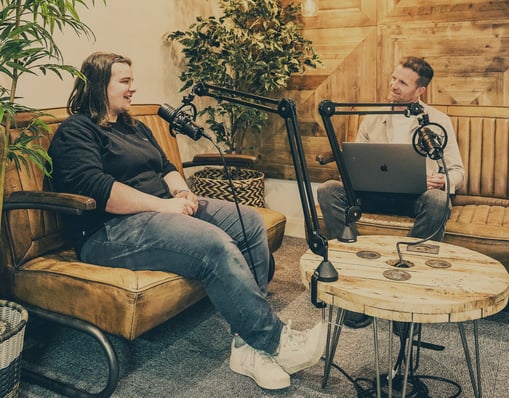
Best of all? Podcasts are free. They’re free for you to create and they’re free for your audience to listen to. Engaging, accessible and at no cost. Try it out and you’ll question why you didn’t make the jump earlier.
The podcasting stats you need to know
Podcasts have come a long way. The term itself was coined by Adam Curry and David Winder back in 2004 which was a combination of ‘iPod’ and ‘broadcast’. Their program, iPodder, automatically downloaded internet radio broadcasts and uploaded them to an iPod, basically creating the first-ever podcast.
It didn’t take long for Apple to jump in by adding Podcast Support to iTunes a year later. Now there’s a dedicated app and Apple is just one platform on the marketplace leading the way with Spotify’s listenership not far behind.
Here’s how much it has grown since, plus some stats you need to be aware of.
- 43% of listeners find new podcasts by asking on social media or an online community, 23% directly ask someone they know, 16% search a podcast app’s directory, 12% search on Google and 6% browse through a podcast chart. (The Podcast Host Discoverability Survey)
- Around 7.1 million people in the UK listen to podcasts each week. That’s one in eight people and an increase of 24% from the past year and more than double over the past five years.
- Entertainment is the most popular podcast genre, followed by comedy, discussions then talk shows. (BespokeMedia)
- Half of those surveyed had been listening to podcasts already for two years. (BespokeMedia)
- Podcasts are helping listeners discover new radio programmes.
- On average, regular podcast users listen to around seven podcasts each week. (Ideaape)
- 22% of people who own a smart speaker use them to listen to podcasts in the UK. (statista)
- 37% of podcast listeners say they’ve listened to a radio programme for the first time because of podcasts.
- For 18 to 54-year-olds, YouTube was the most popular service for accessing podcasts. (UniversityofBedforshire)
- Currently, over two million podcasts are registered by Google (Grow Your Business Podcast)
- 54% of podcast consumers say they think about buying advertising products. (Grow Your Business Podcast)
- Brands that advertise their products and services on business podcasts enjoy an average 14% rise in purchase intent. (Grow Your Business Podcast)
- Chile, Argentina, Peru and Mexico are the fastest-growing countries for podcasting. (InterceptMusic)
- Amazon Prime podcasts have 105 million active users. (Statista)
- 50 billion episodes have been streamed or downloaded from Apple alone. (9to5Mac)
- Monday, Tuesday and Wednesday are the best days to release a podcast. Saturday and Sunday are the days when the number of downloads is the lowest. (Income School)
- 39% of small and medium-sized business owners are podcast users. (Forbes)
- 94% of podcast consumers are active on at least one social media channel. (Music Oomph)
- Smartphones are the number one medium for podcast consumption. 54% of podcast audiences are on Apple’s iOS system, 43% on Android and 3% on others. (Music Oomph)
- Podcast listeners are more likely to subscribe to Netflix or Amazon Prime, meaning they’re less likely to be exposed to TV advertising. (Music Oomph)
- 69% agreed that podcast ads made them aware of new products or services. (Music Oomph)
- 90% of podcast consumers prefer to listen to a podcast at home. (Statista)
- 52% of podcast subscribers listen to entire episodes and 58% listen to between 76% and 100% of all the podcasts downloaded on their device. (Edison Research)
- Only 17% of podcasters record video along with their podcast and only 10% of podcasters live broadcast their episodes. So, there’s a gap there for you to exploit. (The Podcast Host Gear Survey)
- 50% of respondents claimed that podcasts are too long. (Podnews)
- In 2006, only 22% of consumers knew what a podcast was but by 2019, over 64% of consumers were aware of it. (Statista)
- By 2022, it’s estimated that podcast listening will grow to 132 million people in the US alone. Now just imagine the figures on a worldwide scale. (Statista)
- Podcasts are most popular in South Korea with 58% of the population listening to podcasts monthly. Following South Korea includes:
- Spain - 40%
- Sweden - 36%
- Australia - 33%
- USA - 33%
- Italy - 30%
- Canada - 28%
- France - 28%
- Japan - 26%
- Germany - 22%
- United Kingdom - 18% (Statista)
- Podcasting has grown as a traditional media, with 61.2% of people spending more time listening to podcasts than they do consuming TV shows. (DiscoverPods)
- 59% of respondents spend more time listening to podcasts than on social media (Podcast Trends Report 2019)
- 61.3% of podcasters list marketing and building an audience among their top challenges. (Podcast Trends Report 2019)
- According to some calculations, The New York Times makes $4.4 million from its podcast, Wondery makes $77.8 million while Joe Rogan reportedly earns $16 million. (LimeLink)
- By 2023, global monthly podcast listener figures are forecast to grow more than six-fold, from 287 million in 2016 to 1.85 billion. (Ovum)
- Spotify has $200 million more to spend on building its position in the podcasting world. They also admitted that over time, more than 20% of all listening on the platform will be non-music content. (The Guardian)
- Around 26% of podcast listeners increase the speed of podcasts while listening so they can finish sooner. That’s why it’s a good idea to either make your episodes digestible or create snippets to cater to your audience. (Edison Research)
Hopefully, the 35 stats above gave you a good idea of the state of podcasting right now. Rather than go on all day about what podcasting looks like on a worldwide scale, I’ve managed to dig out some insight from our own podcast at Digital 22 - Inbound After Hours.
A couple of years ago, we experimented a little with our podcasts. We went on a bit of a dry spell where we didn’t upload an episode for around six months. Yeah, it sounds like being lazy on our part but it was a good way to see how inconsistency can impact results.
And they did.
Blog post views
For each episode we create, we publish a dedicated blog post as it’s another way to drive up the viewing and listening figures. The more consistent we were with podcasts and blogs to match the episodes, the more views we received.
Just before we stopped podcasting, we reached around the 25,000 mark. In the months we stopped, we saw around a 5,000 decrease.
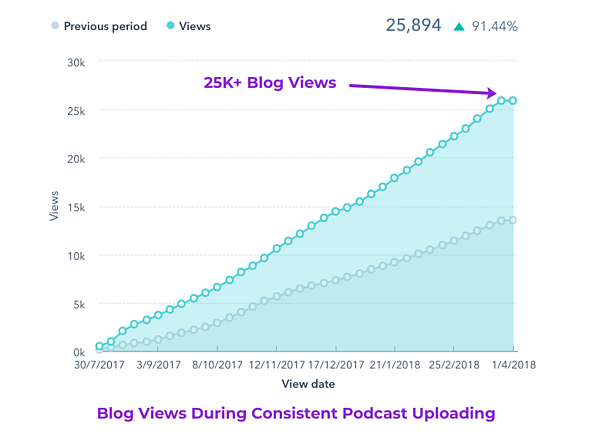
Blog subscribers
Obviously, not every visitor or lead was subscribing for the podcast blogs alone as we create loads of content regularly. When podcasts and podcast blogs were being published regularly, we had around 500 subscribers. When we stopped, there was no real growth as it just remained steady.
SoundCloud
One of the platforms we upload our episodes on is SoundCloud. We noticed the inconsistency resulted in some poor figures. But when we upped the effort, had a schedule and invested in equipment, we consistently received triple figures when it comes to ‘plays’.
Email open and CTR rates
Another good way to get your podcast out there is through emails. This was a simple one, really. The more consistent we were, the more emails we sent and the higher the CTR was.
When we stopped, fewer emails were sent which obviously meant the CTR would be quite low.
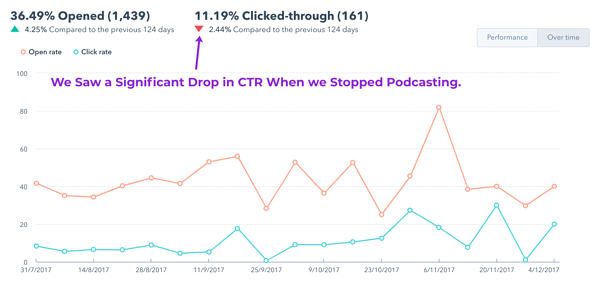
The overarching lesson here is that starting a podcast is great, but being consistent with it is when you’ll begin to see the rewards. To get a better idea of this experiment and the findings in more depth, check out this blog when you have a spare few minutes.
Something that might have surprised you in the earlier on in this section was the countries where podcasting is growing massively or how wide the reach is. To be fair, I was in the same boat but that was until Rikki Lear shared a post on his LinkedIn regarding the Inbound After Hours podcast not long ago.
Our podcast pretty much went global as we connected with fans across 10 countries and over 11,000 miles from the Spotify platform alone. After some more digging from other platforms like Vidyard, SoundCloud and YouTube, we got an even better breakdown of the countries where a podcast created in Clitheroe, Lancashire reached.
- USA
- United Kingdom
- Germany
- Australia
- Canada
- Japan
- Ireland
- Netherlands
- Spain
- France
- India
- Sweden
- Cyprus
- Belgium
- Norway
- New Zealand
- Brazil
- Peru
- South Africa
- Ecuador
- Greece
- Italy
- Indonesia
- Philippines
- United Arab Emirates
- Switzerland
- Vietnam
From these stats, there are plenty of lessons for you to learn if you want to begin podcasting for your business.
Firstly, consistency is key. The more high-quality episodes you create when podcasting for your business, the more your audience will remember you and stay loyal.
Secondly, just start! Nobody ever really assumes that their podcast will be played on a global scale, but you can see above that it’s doable.
This is a great opportunity to market your business further. So, use it as a way to establish yourself as a thought leader, the best in the industry and make your business’ podcast the go-to for people who want to learn and have their problems solved. It’s an underrated lead generation tool you should take advantage of and create an impact on a worldwide scale.
So you’ve got the stats, you understand the benefits of podcasting for business and it’s clear why podcasting works as a content platform. The next step is the most exciting and probably the one you’ve been waiting for - how to get started with creating a podcast for your business.
How to start your podcast
There’s a lot of unexplored space in the podcasting industry. Right now, there are over 600 million blogs and over 31 million YouTube channels but only 800,000 podcasts in Apple Podcasts. With a gap to fill, here’s an in-depth breakdown of how to get started.
Finalise your concept
Goals: Way before hitting record, ask yourself what you want your podcast to be about and why you’re starting it in the first place. This will help you finalise your goals which could be anything from generating leads for your business to being recognised as an industry leader or just for fun.
Theme or topic: Then pick your podcast’s theme or topic. Whatever you choose, just make sure you’re an expert in it and have the passion as listeners will be able to sense how knowledgeable and excited you are about your chosen theme. It’s also a good idea to do some research on podcast directories and see if there are already podcasts in your genre.
If there are, listen to a handful to get a feel of what they do well, how they could improve and what you’d change. If you think you can add something different or do it a little better then check if there’s enough for you to talk about. Try and come up with 15 or 20 different episodes before committing to make sure you actually have enough to talk about and won’t struggle for content ideas.
Name and description: Another big step is to name your podcast. Make sure it’s memorable, catchy and will rank for relevant keywords you’re targeting. It’s a good idea to brainstorm some potential names rather than regretting your choice later down the line. Apple’s best practices guide also states that your title should be specific and uses the title, author and description field for search purposes.
Oh, and try not to stuff your title with keywords. Even though you want to make it easy for people to find you, it’s probably a better idea to add a brief description in the title tag to help search results.
In the description of your podcast, go ahead and include as many relevant keywords as possible without getting carried away. This helps with SEO as many people who find your podcast will probably find it through a search.
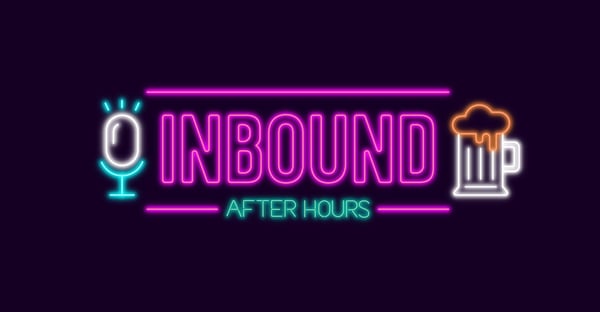
Categories: Wherever you publish your business’ podcast, there will be loads of categories or subcategories to choose from. Choose one that best fits your theme and if you can’t find the exact one, don’t worry. Look at other podcasts similar to yours to check which category or subcategory they’ve selected.
Artwork: You’ll find a lot of tips for your artwork online. It does make sense during your preparation stages to create your artwork but as the podcast for your business is new, you might make some tweaks here and there. Changing titles and descriptions is fairly straightforward but unless you have an in-house Designer or you pay for this service, it can be a bit of a pin to change it regularly until you settle on one design.
If you’re happy with your artwork or you don’t mind tweaking it, then go ahead and create one. Neglecting this entirely isn’t a good idea as the most attractive looking podcasts are those which feature artwork that catches the eye.
Choose your format
Format: When it comes to picking a format, there’s no right or wrong answer. It just depends on what your podcast is about. Some work well with a single host, others have multiple people at one time while others are interviews. You can even adopt a hybrid depending on what each episode is about.
Podcast length: Nobody can tell you how long a podcast should be. Some studies have found the average episode length was just under 42 minutes per episode while others argue they should be shorter to keep audiences engaged. It also depends on your industry, each episode’s topic, who you interview and how often you upload an episode.
If you have a lot to talk about in a popular industry and you upload once a month, it’s unlikely you’ll fit everything in a 10-minute episode. Have a look around and see what others are doing. A lot tend to be around the 20-30 minute mark while you have the likes of Joe Rogan whose podcast lasts for hours.
Again, don’t neglect to create snippets of your episodes so your audio content is much more digestible.
Schedule: Starting a podcast for your business is a big commitment if you want it to be a success. You might decide to publish one episode per day, a couple per week or maybe a few times a month. Either way, consistency is key as it helps you develop a connection with your listeners
When they know your schedule and know you’ll upload on time, they’ll put your podcast into their routine which builds a profound connection with them. It’s also a good way to create a habit for yourself. Recording them on a random day can make you less motivated but when it’s a habit and part of your schedule, it’ll help you grow your brand even more.
Now for the exciting bit - the equipment and software you’ll need to start recording your business’ podcast.
Equipment and software to begin recording
In reality, you can start recording easily. You don’t need to invest thousands in equipment and you don’t need loads of experience. You can begin with just your smartphone and a pair of headphones. Although the content of your podcast is the crucial part, having superior sound quality takes it up a level and ensures people will stick around.
To make sure you have information right from the expert’s mouth, I chased up our in-house Videographer, Aleks, to share his tips with you on what you’ll need for your business’ podcast. So it’s even more helpful, we’ve broken it down into three stages depending on where you’re at: starter, experienced and expert.
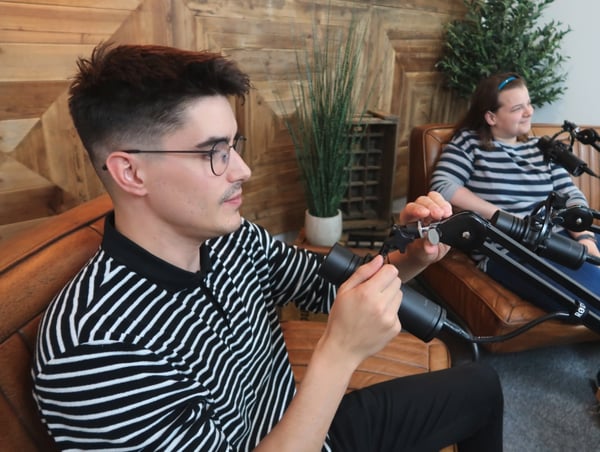
Starter
Location: Find the right locations. If the room is too big, you’ll have an annoying echo recorded which isn’t great. So the smaller the room, the better the acoustics. Also, have somewhere to sit or relax - the point of the podcast is to be casual and laid back. It’s also a good idea to add some soft furnishings to your room to absorb some of the noise.
Microphone: Get yourself a microphone. Blue Yeti is one of the best and most affordable to get started with. Just put it in front of you and your line-up then hit record. You can use this mic at events and for other types of videos as well. The only downside is you’re only recording one track with one device which means the loudest person wins. Also, multiple speakers at once can be a bit jarring for the listener.
Video: If you want to record video for your podcast at this level, make sure your set is presentable and your guests. If you’re not comfortable enough or don’t have the resources to start video, leave the cameras and publish on audio-only platforms. If you have presentable aesthetics, get your iPhone out and play around with the quality settings to keep the storage space to a minimum if you’ll record for 30 minutes or over.
To get your smartphone to stay pointed at your set-up, pick up a tripod with an adapter.
Software: If you’re at an entry-level, you can edit using Audacity which is a free software tool. You can record straight into this too.
Experienced
Location: Now, you should have a nice room with a carefully-crafted setting. Maybe some posters on the wall and a few indoor plants. Most importantly, you have crisper room acoustics that don't make voices sound echoey.
Microphone: Use an HD camera for the full shot of your set. We use the Panasonic Lumix GH5 and you can use an iPhone or another smartphone to cover any alternative angles if you like. Just a heads up, though, the quality of the image will be different to the main camera footage. It’ll make the final edit look a little messy so stick to one camera for now as 4K will let you scale closer to each speaker within the full shot without losing quality.
It still gives the effect that there’s another camera and you’ll need a better-quality tripod as well to support higher-end cameras. The Manfrotto tripod should do the trick.
Software: Zoom Digital recorder has inputs for all types of microphones while also having an on-board microphone which is powerful enough. It’s in the same lane as the Blue Yeti and at this level, a microphone for each person appearing in your episodes is the better option.
Expert
Location: If you’re at an expert level, you should already have the best room acoustics around with sound-absorbing foams if necessary.
Microphone: Depending on how many people are in your podcast per episode, have at least four condenser microphones. These mics have robust designs with ultra-sensitive pick-ups which makes voices sound like you’re in the room of the listener. These are better on arms which you can adjust to match to your mouth.
On the arms, you’ll need shock absorbers to stop the rustling noise caused by vibrations of any leg movements of external noises. Try out the Aston Stealth Mic which has a cardioid pick-up pattern. This cuts out noise from other people around you and then attach these onto studio-quality boom arm like the Rode and feed the XLR cable to a midi controller like the Tascam with four inputs.
Software: You can then record your episodes using Adobe Audition as it gives you more power to edit and a smoother interface than Audacity. Although, you’ll need a subscription for this.
Cameras: To really spice up the final output of your podcast, set up multi-camera recording. Have a main camera with a full-shot as well as separate camera angles of each speaker to cut to so you can mix up the visuals.
Recording your business’ podcast
Recording and editing is where it all comes to life. Even though it can be a long-winded process, don’t give up at this stage. Sure, it’s easy to lose momentum when things get technical or difficult, but it’s worth the effort when your business begins to see the results.
Even some of the best podcasts start off with a few bad episodes. You might be a natural and start on the right foot but if you need to find your footing and make some tweaks, then use that to make your next episode better. The more podcast episodes you record for your business, the more you’ll improve.
Before recording, make sure you have some sort of plan. That doesn’t mean hand everyone involved a script which they need to follow word-for-word. Instead, maybe come up with a topic outline and share with the relevant people so they’re at least somewhat prepared when you have a conversation.
As Aleks said, record in a quiet room with great acoustics as the crisp audio quality (along with your content) is what will please listeners and determine if they subscribe or leave. Also check your microphone settings are correct as well depending on if you have a USB microphone or an XLR.
- USB: Plug directly into a USB port and select it as the audio input on your editing software.
- XLR: Hook up your XLR mic into an external audio recording device which saves it all to an SD card.
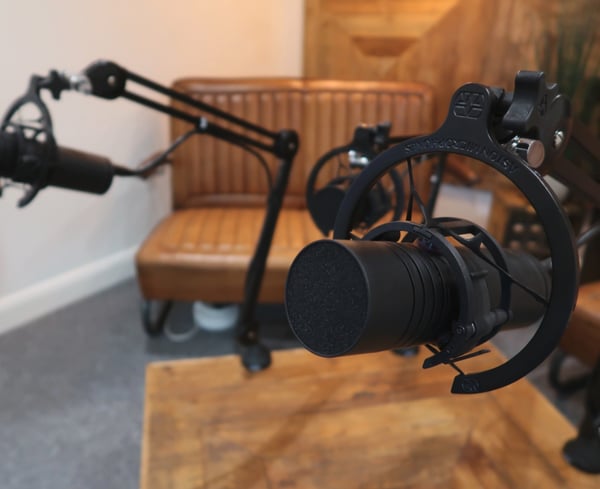
Once you’re all set up, grab a drink and hit record. It’s handy to keep a glass of water or any other drink in arm’s reach in case your mouth gets a little dry and if your business’ podcast is a little more laid back, there’s no harm in showing you’re human on camera while having a drink rather than trying to make it too perfect.
Tying it all together in editing
Now to put all of your hard work together. If you have a full-time editor in-house then they’ll already know how to edit everything. If you don’t or don’t want to bring on someone full-time in this role, you can look to outsource it too with your requirements.
- By keeping all of your tracks separate, you can make edits to each track, adjust the volume, mute speakers and get rid of other mistakes. Plus, it just makes editing a lot easier in the future.
- Another handy tip is to edit content for your first pass and then revisit it to work on any noise issues and other distractions. It’ll help you stay focused and gives you a chance to strictly look for audio issues once you have a second go at editing.
- If you get some little pops or clicks in your finished audio, use the fade tool to remove unwanted noise.
- Search for some jingles or music for your intro which will complete your podcast. The downside to royalty-free sound is other businesses may have used it for their podcasts so if you want something a little more exclusive, think about purchasing a track for your intro.
- Once you have your episode ready, save it, export it in the correct format and you’re good to.
If you need a little more information on how to get started, why not check out a talk we did at the Manchester HUG?
Obviously, this is only a quick run-through the podcast editing process. There’s a whole lot more which goes through the editing, exporting and uploading processes. You need to think about the best platforms to publish your podcasts on. Also think of the small yet important intricacies like ID3 tags, show notes, submitting to platforms like Apple Podcasts, Spotify and plenty of other directories.
Then there’s the actual marketing of your podcast. Creating a blog about the launch of your business’ podcast, producing content for each new episode, sharing it in your Facebook group if you have one. Anywhere where it’s not spammy is a great way to get your podcast’s name out there.
Hopefully, you have the tools and advice to get started. I’ll admit, it’s a lot to take in and probably quite challenging to try to do all of this yourself. The demand for podcasts is there so your business needs to give your audience what they want.
We can help you get there.
Inbound podcasting services from Avidly HubSpot Solutions
At Avidly, we offer this unique service to attract your ideal audience and solidify brand authority. As you can tell, there are so many different skills involved. Lots of technicalities to get to grips with, the different channels you need to be aware of, the cost of equipment, setting up, time and dedication. Yeah, it’s a bit overwhelming.
With our process, we’ll strategise with you to create a tailor-made plan to reach your goals and give your audience exactly what they want. This includes using our latest equipment and our experience. We’ll also edit your podcast, host and market it on the relevant channels.
Or for more information on what our inbound podcasting service has to offer you and your business, check out our dedicated page on our website for a detailed breakdown of our entire strategy.
For more information on inbound marketing in general, click the button below to download our inbound marketing guide.
Real Growth. Real Impact.
How to use HubSpot AI Content Tools - Avidly Sessions video training
How to use video first communication - Avidly Sessions video training
Getting to know HubSpot Commerce Hub [VIDEO Q&A]
Watch 7 amazing speakers at our annual event LOVE INBOUND 23
DESIGN VS: Projects | Ep. 06
PAID MEDIA PODCAST — How to get the most out of your PPC budget
Why is my content not ranking in Google? | The Strategist Playbook Ep03
See why enterprises chooseAvidly
Let’s build your HubSpot success story
Compelling final call to action - with accompanying link to Contact page




![Getting to know HubSpot Commerce Hub [VIDEO Q&A]](https://www.avidlyagency.com/hs-fs/hubfs/.Avidly%20HubSpot%20BU%20Assets%20and%20Files/HSBU%20Marketing%20Folder/Global%20or%20EN%20Campaign%20Assets/HSBU%20Learn%20About%20Commerce%20Hub%20Blog%20Post%20Image.png?width=400&height=225&name=HSBU%20Learn%20About%20Commerce%20Hub%20Blog%20Post%20Image.png)




